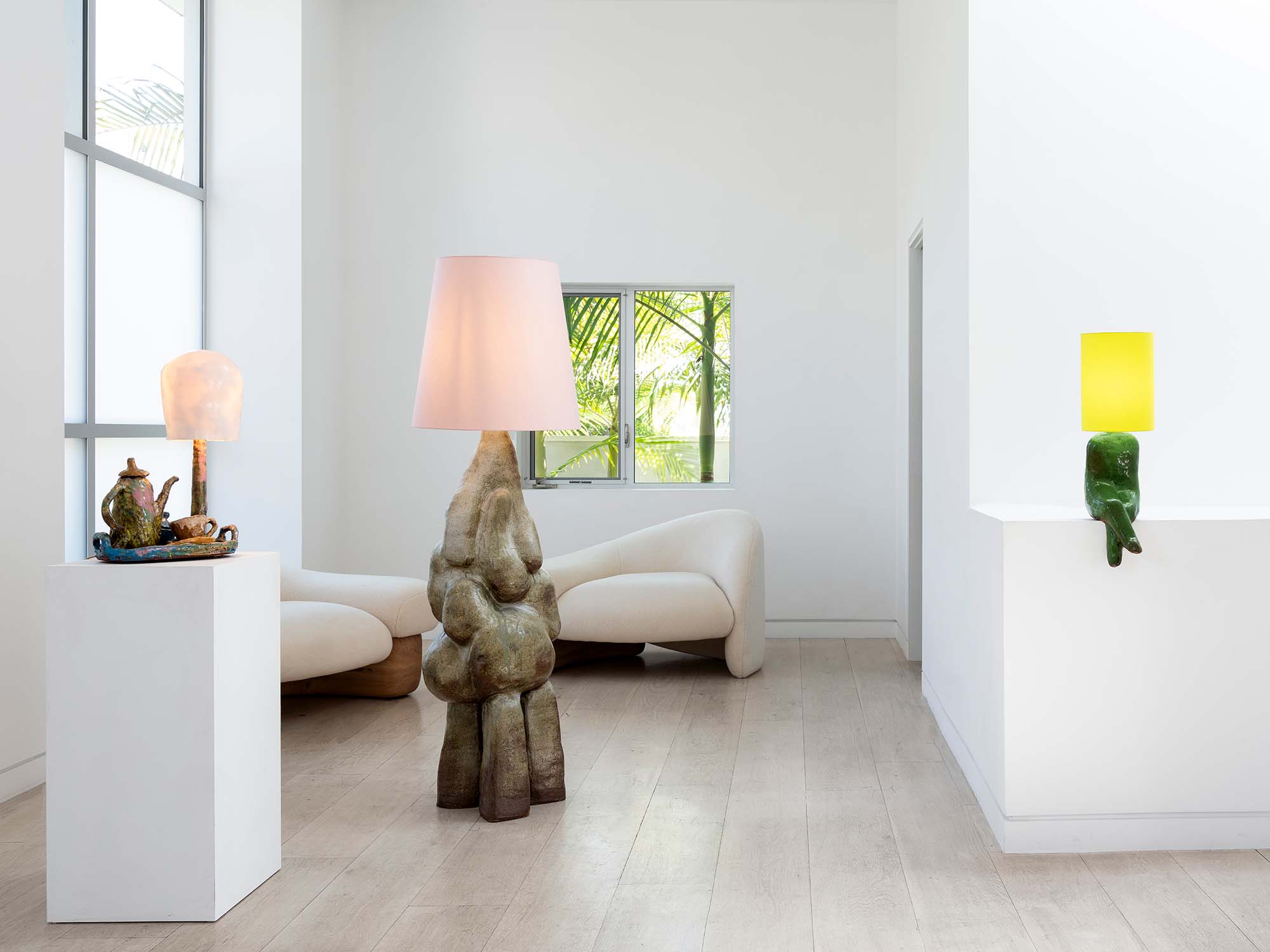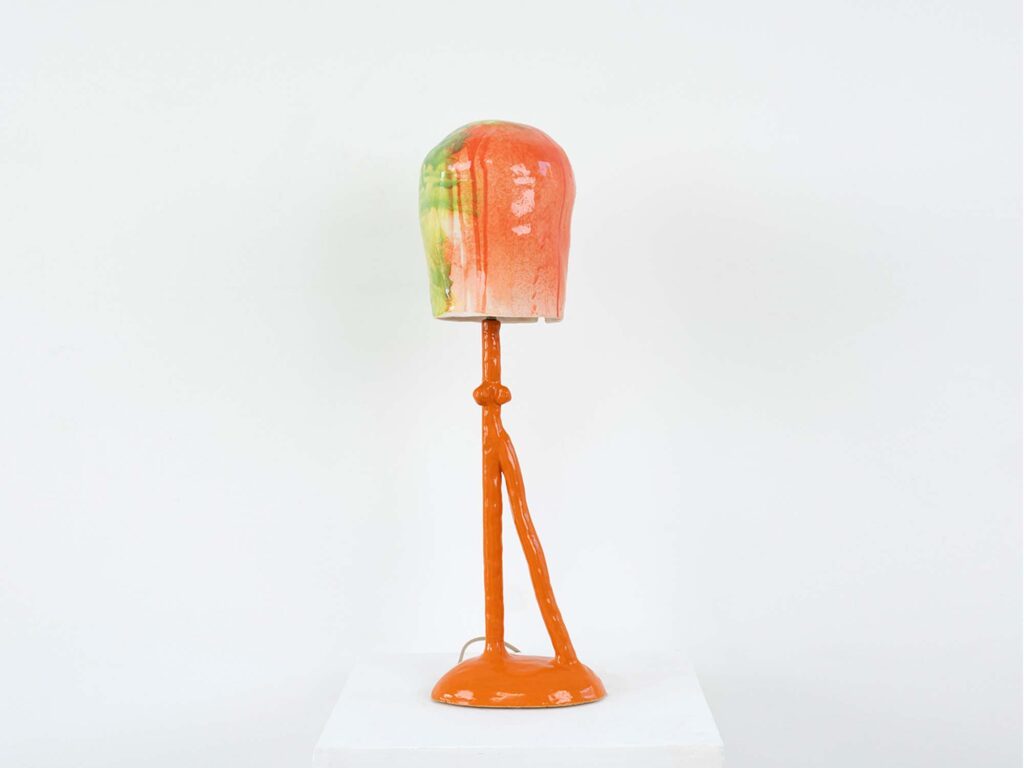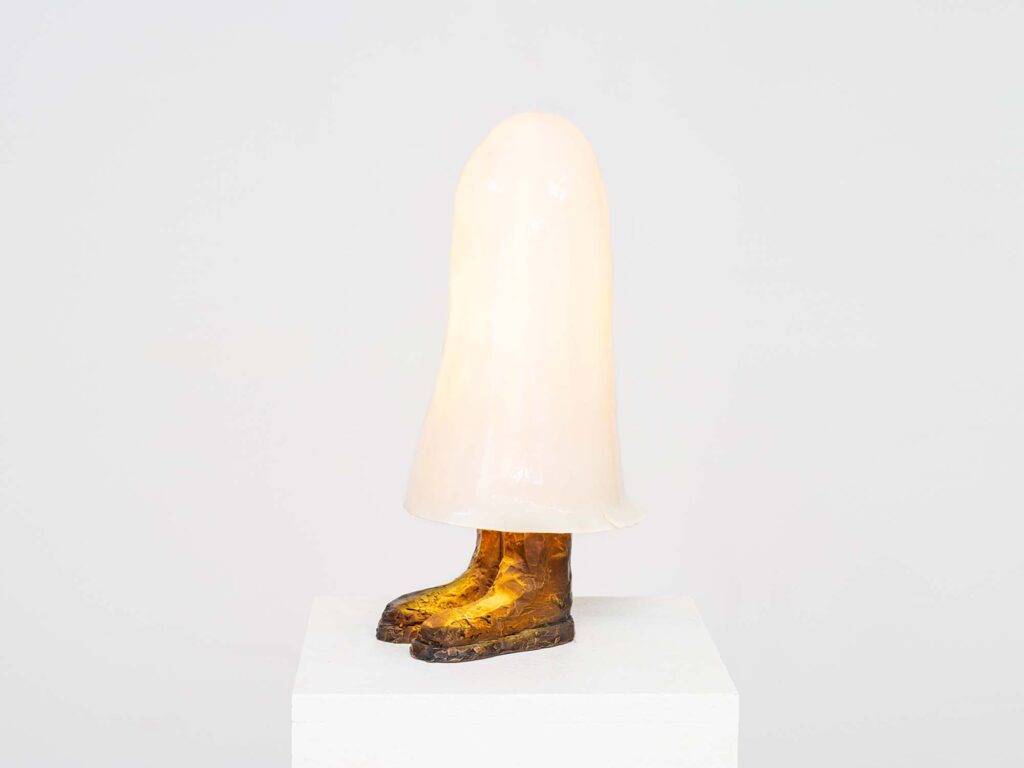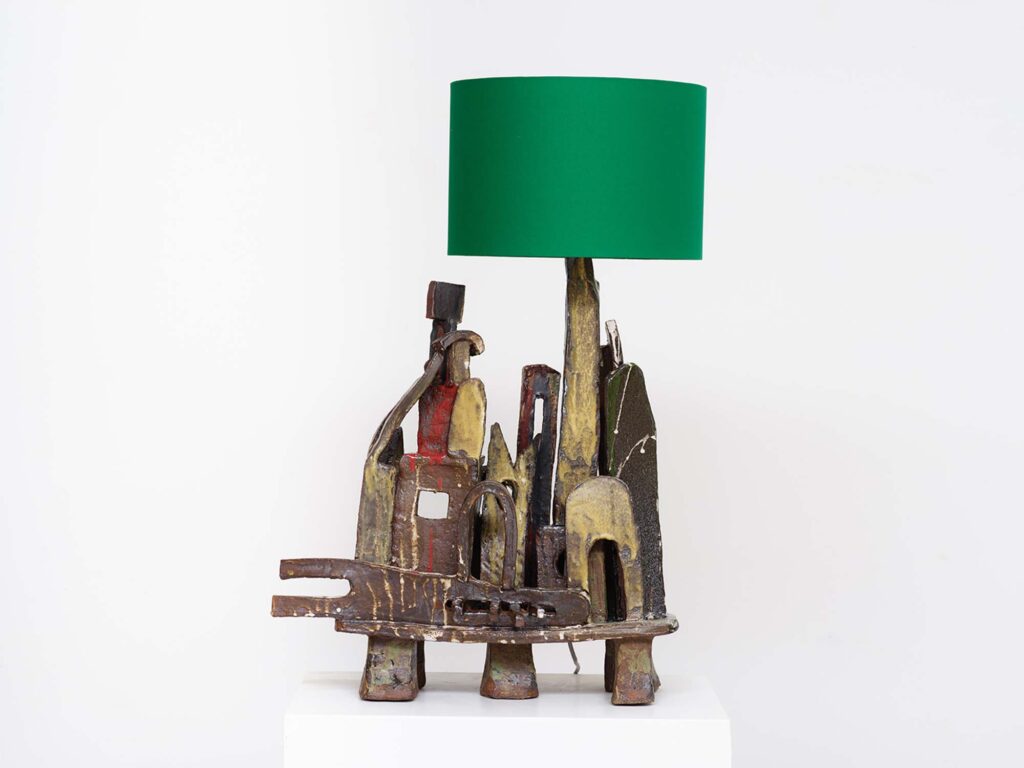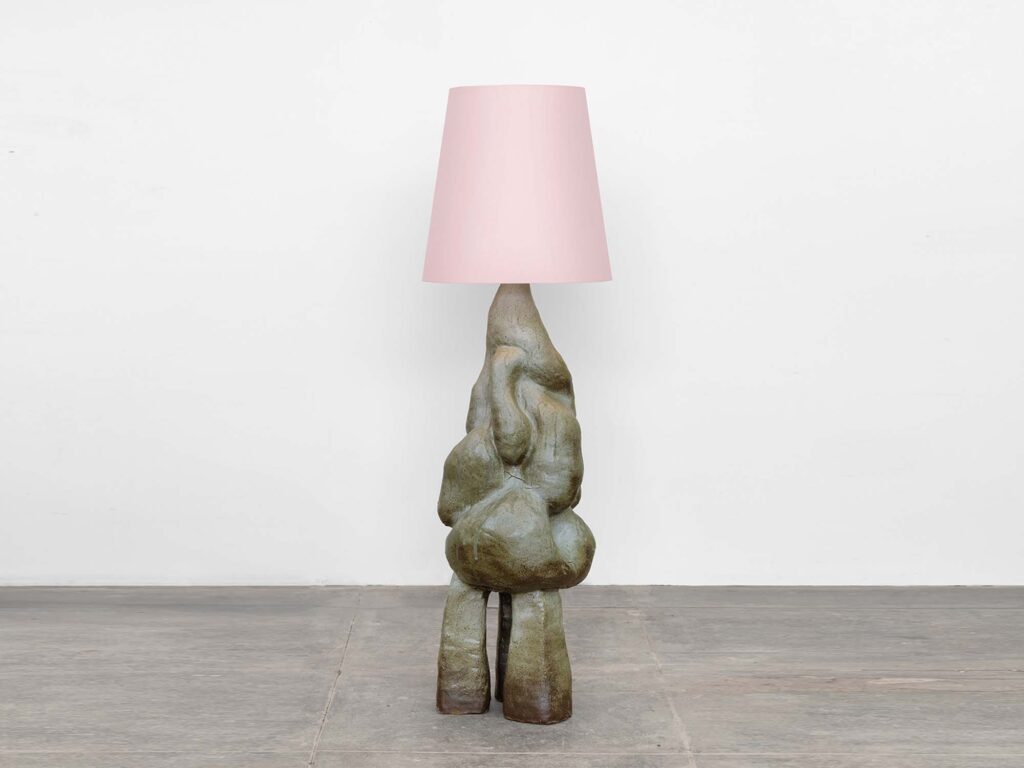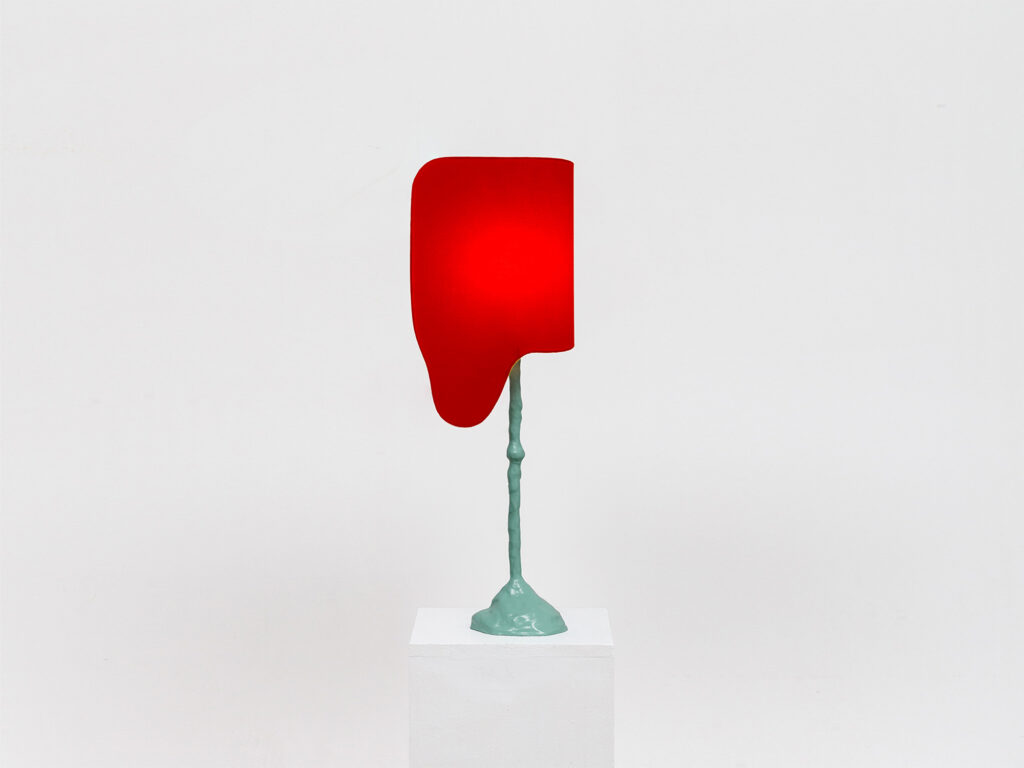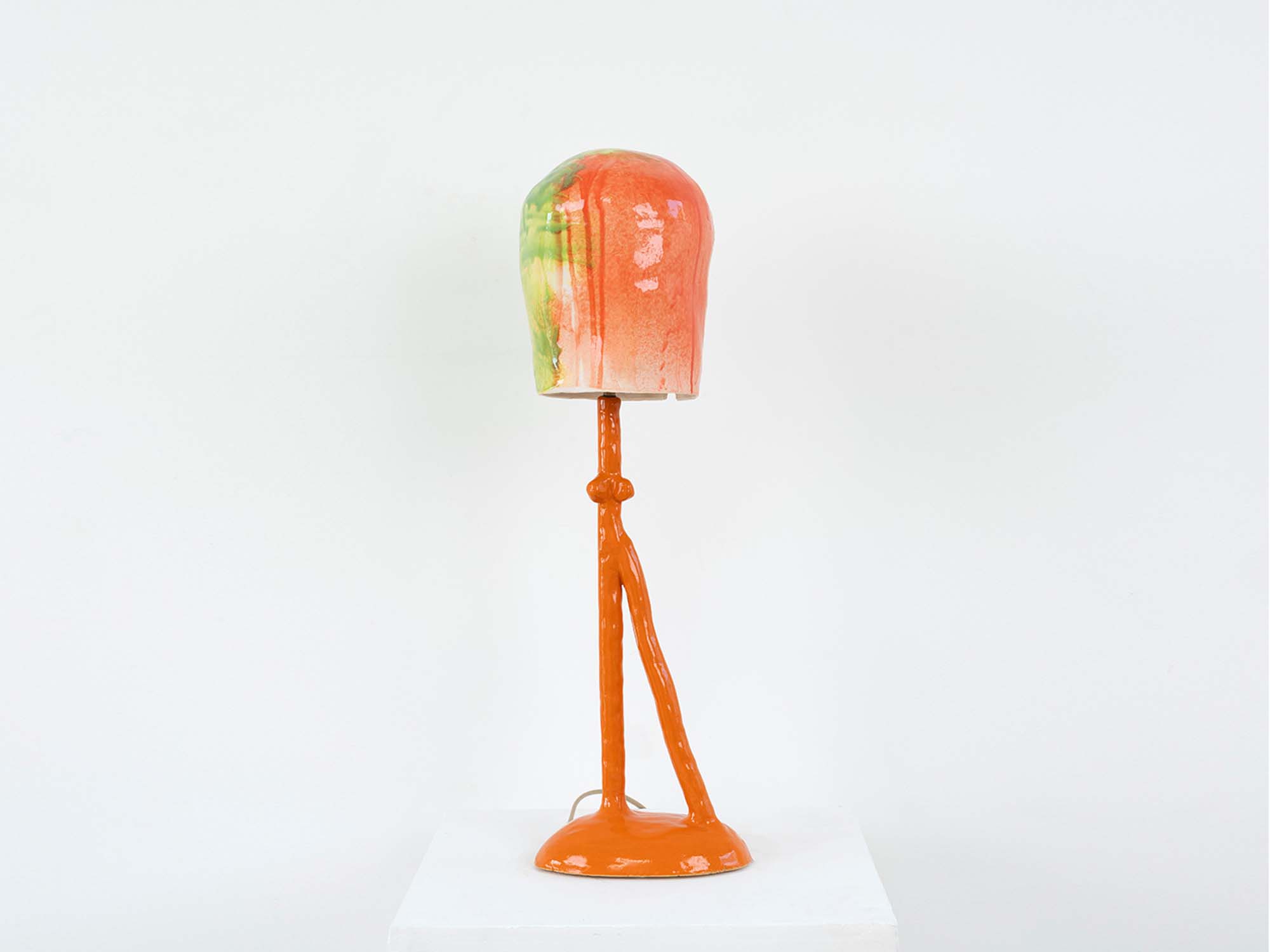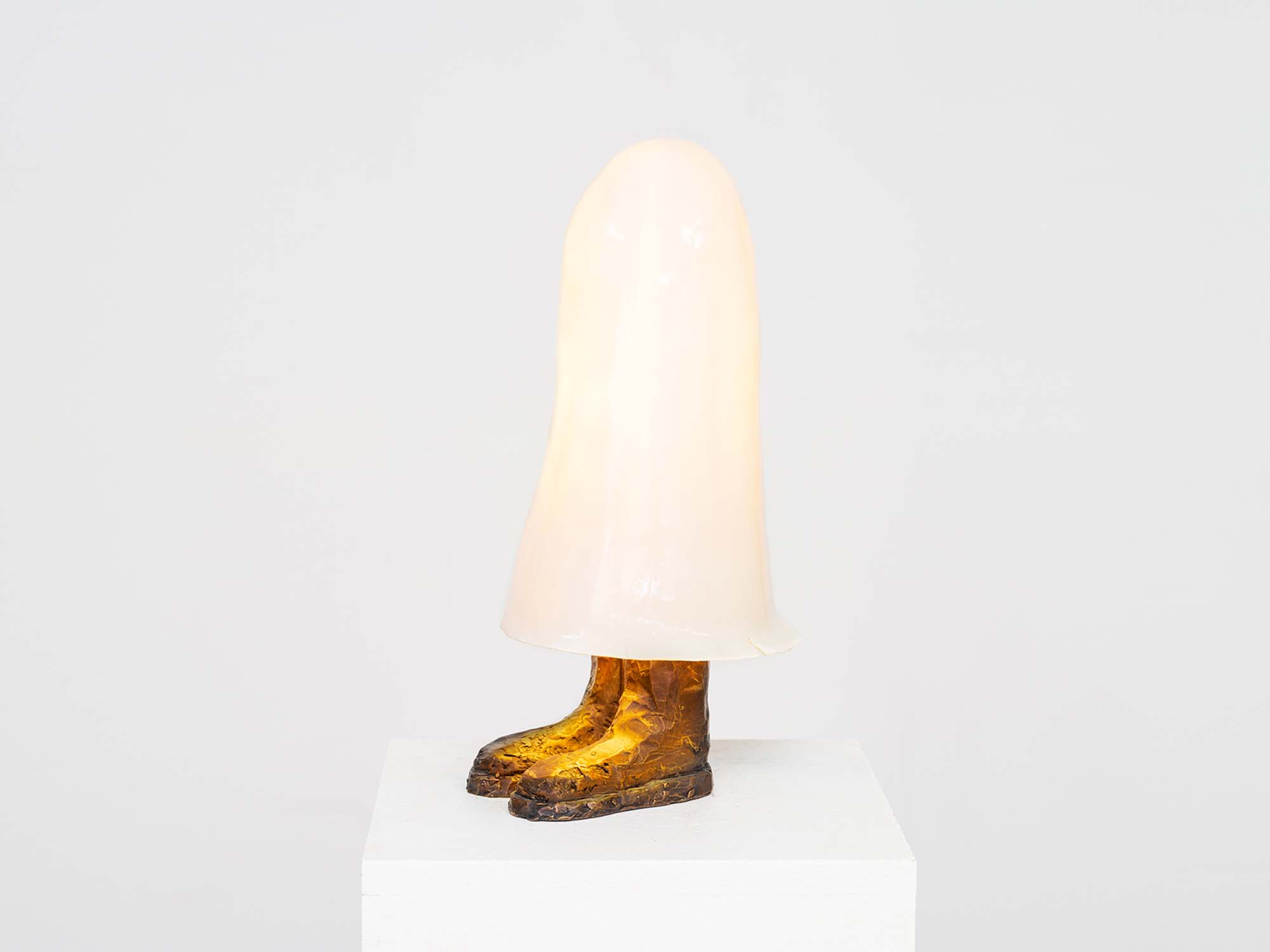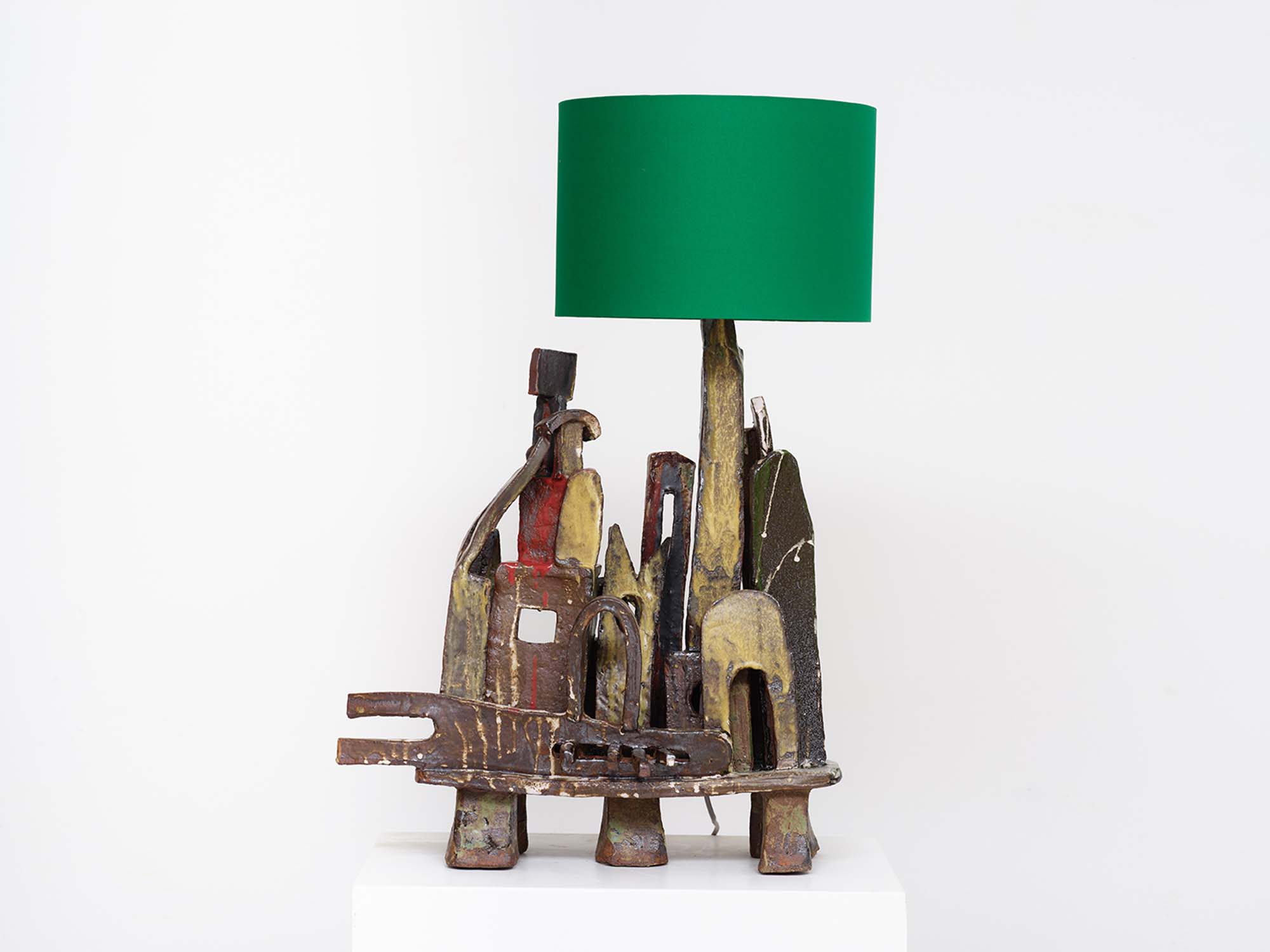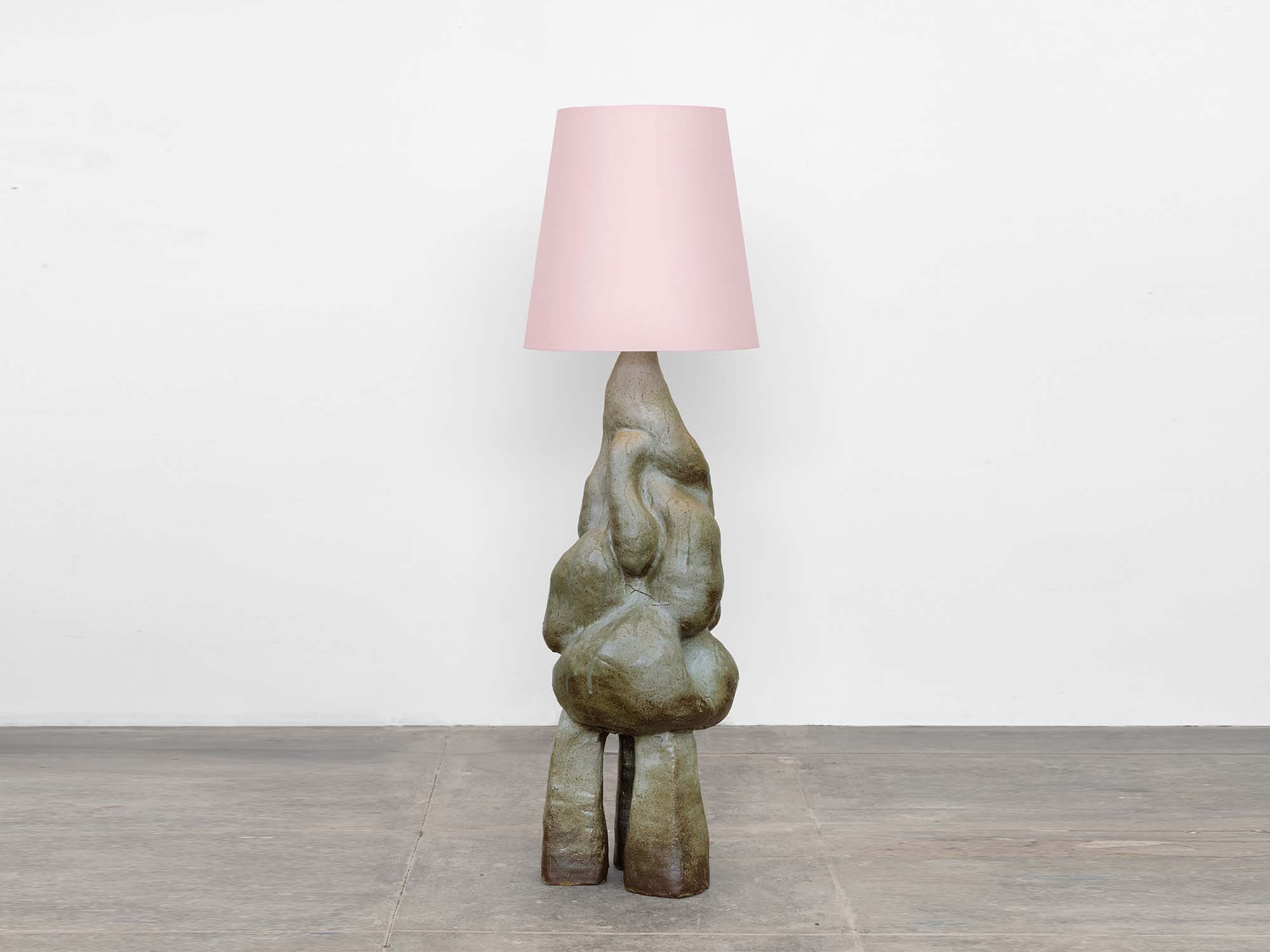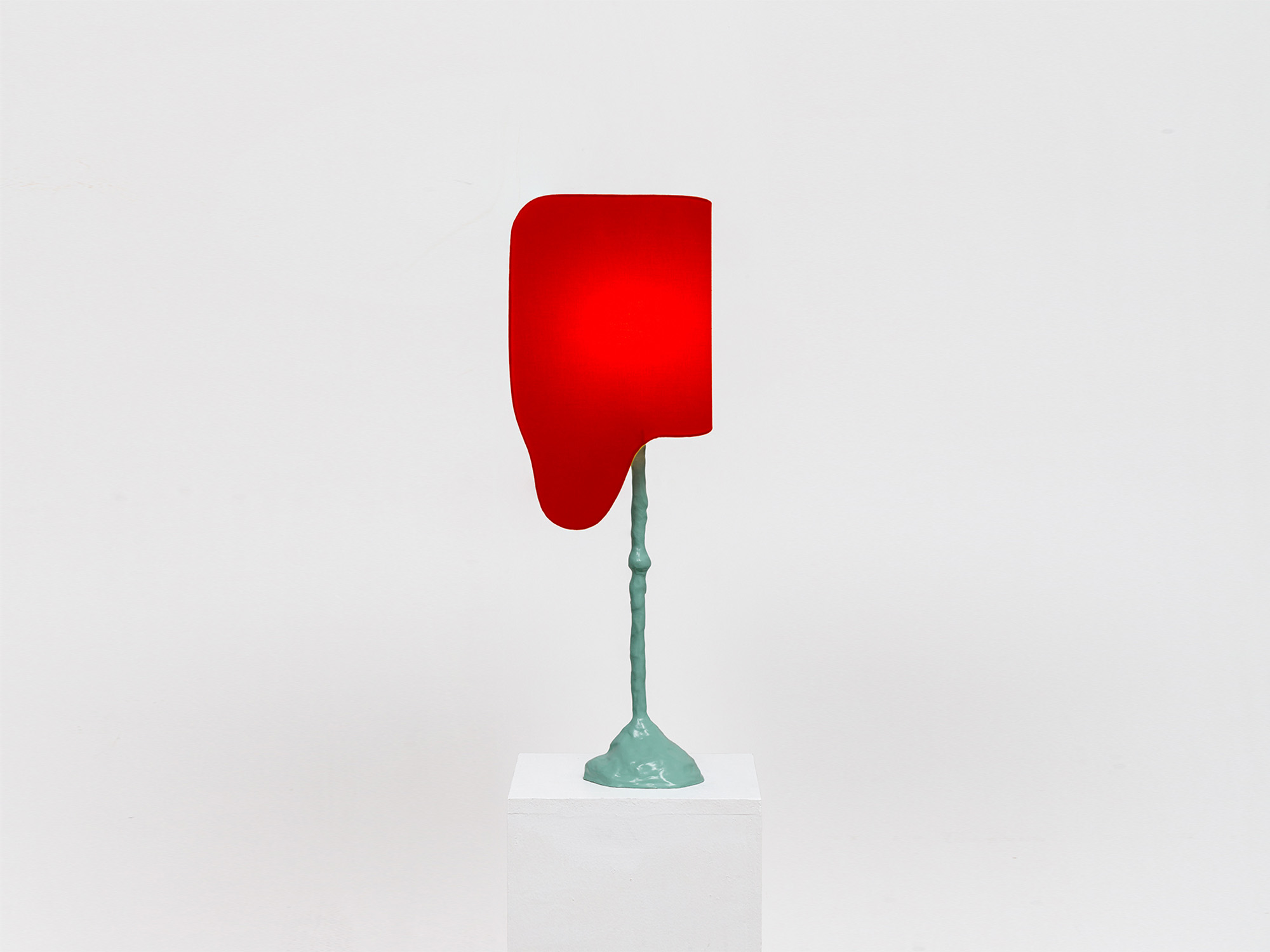Friedman Benda is pleased to present, Hallo It’s me again, a solo presentation by Carmen D’Apollonio, in the gallery’s Los Angeles location. This setting debuts recent work by the local artist, who has secured international recognition for her evocative sculptural lighting that uniquely investigates the spectrum of abstraction to figuration in clay and bronze.
Through her intuitive, self-taught approach, each piece is personified with its own stand-alone narrative as D’Apollonio allows her creations to take on a life of their own. Emphasizing her recent experiments with gesture and materiality, D’Apollonio’s joy in the making process is instantly apparent. “I approach ceramics with no boundaries. I push myself to break the rules of how clay regularly behaves. I like to believe that my sculptures portray an unspoken poetry,” states D’Apollonio.
The body of work on view—as well as the exhibition’s cheeky title—speaks to the artist’s keen sense of humor and levity that defines her practice. Blending diverse influences from the modern art history canon, D’Apollonio’s work includes references ranging from ancient Greek and Roman statuary to 20th century British potters and Modernist painters. Constantly pursuing new variations within her immediately identifiable surrealist aesthetic, D’Apollonio communicates personal observations on everyday life with spontaneity and relentless energy.
About Carmen D'Apollonio
Born in Switzerland in 1973, D’Apollonio previously worked as an art director for short films and commercials in the mid-nineties. In 1996, she began working with the artist Urs Fischer, and assisting him for over a decade. In 2006, she founded the fashion brand Ikou Tschuss (ikou means “let’s go” in Japanese and tschüss is “bye-bye” in Swiss German), which combined modern textiles with traditional artistry. D’Apollonio established her own studio in Los Angeles in 2014. D’Apollonio’s process begins with sketching, which she then translates into clay—evolving the three-dimensional form as she goes. Her titles range from the comic to the plaintive and offer narrative fragments entirely in tune with their suggestive, open-ended compositions.
